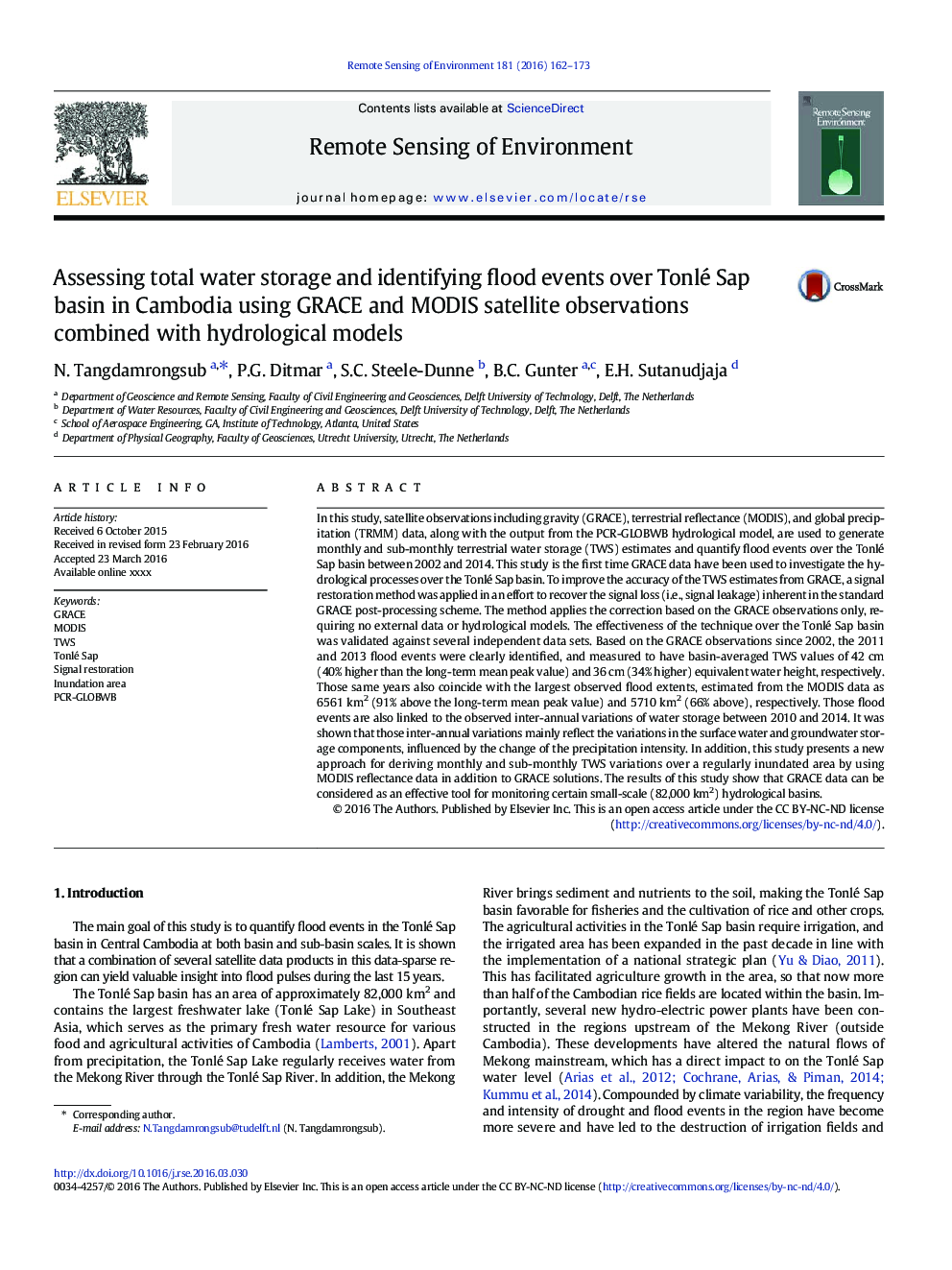| Article ID | Journal | Published Year | Pages | File Type |
|---|---|---|---|---|
| 6345305 | Remote Sensing of Environment | 2016 | 12 Pages |
Abstract
In this study, satellite observations including gravity (GRACE), terrestrial reflectance (MODIS), and global precipitation (TRMM) data, along with the output from the PCR-GLOBWB hydrological model, are used to generate monthly and sub-monthly terrestrial water storage (TWS) estimates and quantify flood events over the Tonlé Sap basin between 2002 and 2014. This study is the first time GRACE data have been used to investigate the hydrological processes over the Tonlé Sap basin. To improve the accuracy of the TWS estimates from GRACE, a signal restoration method was applied in an effort to recover the signal loss (i.e., signal leakage) inherent in the standard GRACE post-processing scheme. The method applies the correction based on the GRACE observations only, requiring no external data or hydrological models. The effectiveness of the technique over the Tonlé Sap basin was validated against several independent data sets. Based on the GRACE observations since 2002, the 2011 and 2013 flood events were clearly identified, and measured to have basin-averaged TWS values of 42Â cm (40% higher than the long-term mean peak value) and 36Â cm (34% higher) equivalent water height, respectively. Those same years also coincide with the largest observed flood extents, estimated from the MODIS data as 6561Â km2 (91% above the long-term mean peak value) and 5710Â km2 (66% above), respectively. Those flood events are also linked to the observed inter-annual variations of water storage between 2010 and 2014. It was shown that those inter-annual variations mainly reflect the variations in the surface water and groundwater storage components, influenced by the change of the precipitation intensity. In addition, this study presents a new approach for deriving monthly and sub-monthly TWS variations over a regularly inundated area by using MODIS reflectance data in addition to GRACE solutions. The results of this study show that GRACE data can be considered as an effective tool for monitoring certain small-scale (82,000Â km2) hydrological basins.
Related Topics
Physical Sciences and Engineering
Earth and Planetary Sciences
Computers in Earth Sciences
Authors
N. Tangdamrongsub, P.G. Ditmar, S.C. Steele-Dunne, B.C. Gunter, E.H. Sutanudjaja,
